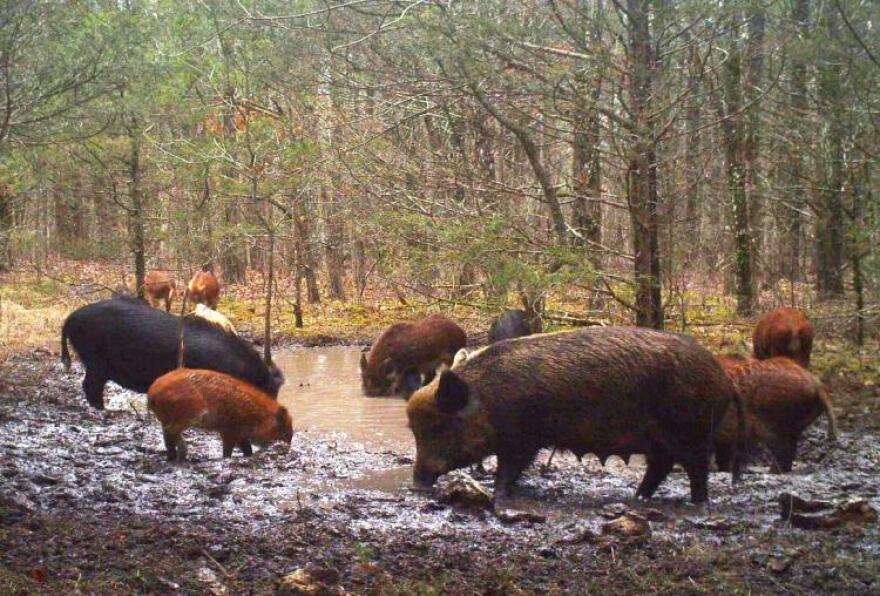Centuries ago, European settlers brought hogs to North America. But little did they know that the wild descendants of those animals would become a major pest. Considered an invasive species, the feral hogs are known to ruin natural areas, spread diseases and cause enormous property damage for local farmers.
“Populations can be tremendously destructive to habitat,” said Jason Sumners, wildlife division chief at the Missouri Department of Conservation. “They also compete directly with native wildlife. So from that standpoint, they’re tremendously undesirable.”

The animals, which reproduce quickly, have also been difficult to eradicate. The feral hog population in Missouri has spread to at least 30 counties, despite efforts to trap them. Now, commissioners of the Missouri Department of Conservation have approved a measure that officials are hoping will make it easier to trap and kill the species: a ban on shooting feral hogs on public lands.
While it might seem strange to prohibit hunting the species, Sumners says it can actually interfere with traps the department has set up, which are designed to capture a large number of hogs. A person who shoots at a herd might kill one or two hogs, but the rest would scatter.
“Hogs are very wary of human pressure, so [shooting at them] can essentially negate the efforts to capture those individuals,” Sumners said. “It certainly is a challenge, no question about it.”

Feral hogs are also are considered very intelligent and have learned to avoid traps. Recently, the MDC began experimenting with a new type of trap called the “BoarBuster” that is designed to drop from above the hogs. It operates by linking video footage to a smartphone and will trap the animals on command.
The regulation will be effective Sept. 30.


